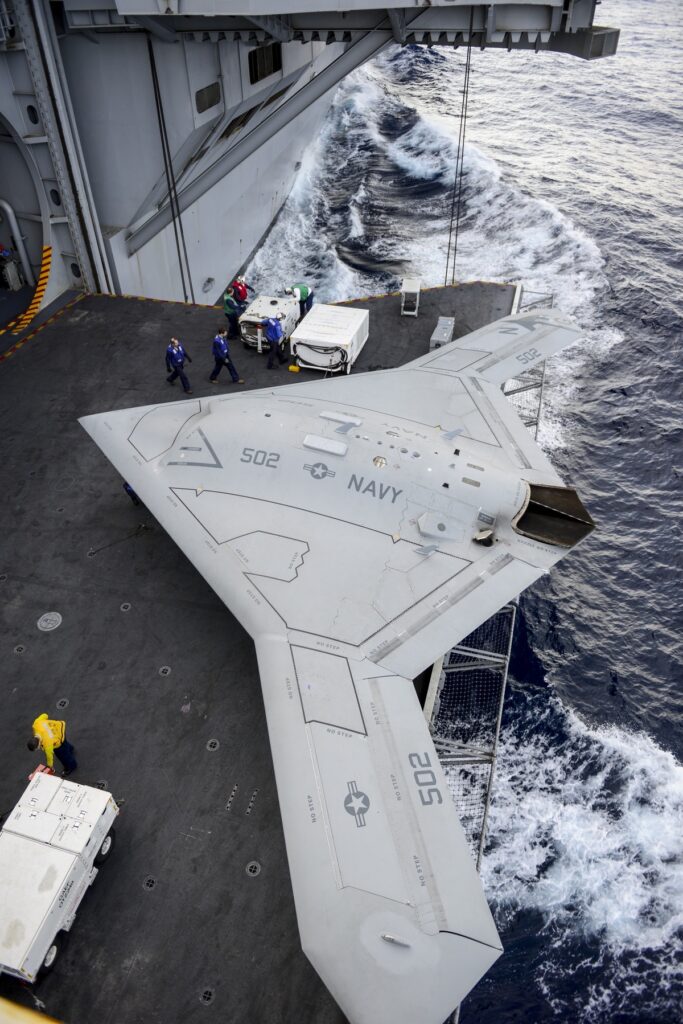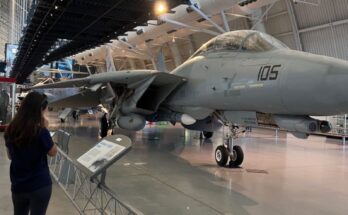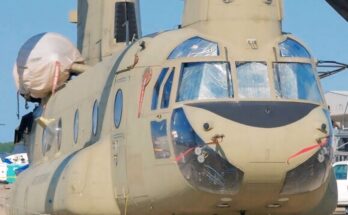
Northrop Grumman X-47B is an experimental unmanned combat air system (UCAS) developed for the U.S. Navy to test the feasibility of carrier-based stealth drones. It was part of the UCAS-D (Unmanned Combat Air System Demonstrator) program.
Here are the key details:
Overview
- Type: Unmanned combat aerial vehicle (UCAV), technology demonstrator
- Manufacturer: Northrop Grumman
- First Flight: February 4, 2011
- Status: Retired from flight testing in 2015; used for research and development
Design & Features
- Wingspan: ~62 ft (19 m)
- Length: ~38 ft (11.6 m)
- Powerplant: Pratt & Whitney F100-PW-220U turbofan
- Max Takeoff Weight: ~44,000 lbs (20,000 kg)
- Range: ~2,100 nautical miles (3,900 km)
- Payload Capacity: ~4,500 lbs (2,000 kg) of weapons in internal bays
- Stealth: Shaped for low radar cross-section (similar philosophy to the B-2 Spirit)
- Autonomy: Highly automated, able to take off, land, refuel, and conduct missions with minimal human input
Achievements
- 2013: First UAV to catapult launch from an aircraft carrier (USS George H.W. Bush, CVN-77).
- 2013: First arrested landing of a UAV on a carrier.
- 2015: Successfully demonstrated autonomous aerial refueling with a KC-707 tanker, a first for a drone.
Purpose
The X-47B wasn’t intended to go into production. Instead, it served as a proof of concept for future carrier-based stealth drones. Lessons learned helped shape the MQ-25 Stingray, the Navy’s upcoming unmanned tanker drone.
👉 Would you like me to also make a comparison between the X-47B and the MQ-25 Stingray so you can see how the Navy shifted its strategy?


